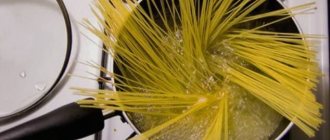Cons of Meal Plans
So, let’s assume that we have a formed nutrition plan, a list of products and a meal schedule attached to them. In theory, it seems convenient - you know what to have for breakfast and what for dinner, you understand that you will get as much protein and nutrients as you planned.
But in practice there is a whole stack of disadvantages.
1. Diet plan promotes antisocial behavior
But any surprise easily invades and ruins your food plans - say, you were invited to a birthday party or you went with your friends (wife, child, colleagues, mother) to an Italian restaurant where there will be wood-fired pizza, lasagna and al dente pasta. This is where the first rough edges begin: you didn’t eat what you planned, you need to put somewhere what you planned, but didn’t eat. It is also not clear how to calculate the KBJU of a dish served outside the home. In general, many questions immediately arise.
In this example, anyone who has tried to eat according to the KBZHU can recognize themselves. As a result, if you live with a diet plan, you consciously (or even subconsciously) avoid any communication related to food.
Many adherents of strict meal plans are afraid of restaurants. There is no need to do this: one hike will not change your diet much. Moreover: experts allow (and even recommend) that up to 20% of your diet be made up of your favorite food, even if it is “junk” food.
It just so happens that feasts and eating together have always been part of our culture. Who doesn’t remember family dinners, New Year’s holidays at the wide parental table with often far from healthy food, but a healthy family atmosphere. The nutrition plan brings a certain resonance, because in pursuit of the schedule, we can literally turn into the heroes of the movie “Bubble Boy,” sometimes sacrificing family happiness.
2. A strict approach to your nutrition plan promotes self-flagellation and breakdowns.
The problem here is that we put ourselves into a routine where we divide our days into “good” and “bad”. Having allowed ourselves a little extra or something that is not included in the nutrition plan, we give up on everything, and at the same wide feast we give ourselves some slack so that we can start all over again.
By the way, this phenomenon can be called “What the hell!” or “Burn it all!” and is described in the scientific literature and our article. Avoid this style of thinking.
3. Lack of variety
The nutrition plan requires regularity. And it often happens that once people find foods and meals with the “ideal” ratio of nutrients, they begin to create a plan from the same foods week after week.
This is fraught with the fact that the body may not receive enough vitamins and microelements. For example, if you completely ignore dairy, you may have a calcium deficiency, if you do not eat meat, B vitamins, do not go out into sunlight, and there is no fish in your diet, you may lack vitamin D. The more varied your diet, the less such problems.
4. The problem is lack of knowledge
The average person who gets involved in experimenting with meal plans is like a passenger in a taxi, where the destination is his goal (for example, losing/gaining weight), and the meal plan is the transport that will get you there (or not). The plan was drawn up by specialists, the transport regularly performs its function, but having delivered you to your destination, it will not tell you what to do next. Often here a person gets lost, and everything returns to normal.
5. Time constraint problem
The more stringent your restrictions are within your meal plan (for example, you somehow set strict time limits - for example, lunch at 2:15 and that's it!) - the higher the chance that you will relapse. And scientific research proves that, according to statistics, after a breakdown, a person finds himself even further from the goal than when he started (again, “thanks to” the “what the hell!” effect).
This is why meal plans that are too rigid end up losing out to more flexible options. Make your diet plan as gentle as possible, one that you can live with for years.
Pros of Meal Plans
Still, you shouldn’t exaggerate. We have nothing against meal plans. In the end, everything has its advantages and disadvantages.
1. Plus: saving time
In a large metropolis, every minute is currency. When everything is coordinated and the list is verified, there is no need to wander absentmindedly around the store, feverishly thinking of what to eat. Don't bother studying labels, calorie information, and sugar content. You can prepare in reserve. A good meal plan is a great example of time management.
2. Plus: everything is clear
Well-thought-out meal plans make everything clear, and you can rest assured that nothing extra will grace your plate.
3. Plus: cost savings
This also means saving money from visiting dubious public catering establishments, so you can now spend money on a new shaker, for example.
4. Plus: less stress
This is a look at the psychological side of the issue from a different angle. With a simple and understandable meal plan for the week, you don’t need to engage in artistic writing on the topic “does this fit into my caloric intake” or “does this have enough healthy nutrients” and you don’t have to worry about it at all.
5. Plus: Improved Energy Levels
This is perhaps one of the significant advantages. This is especially noticeable for those who work hard. With regular healthy eating, energy is distributed evenly, thus avoiding spikes in sugar levels, overwork, ketosis and other unpleasant things. Also, we have repeatedly mentioned that nutrition accounts for up to 80% of the results in the gym.
6. Plus: stability and guarantee of results
When we eat the same foods regularly, it is clear that sudden weight changes are unlikely. Therefore, it is much easier to monitor your weight, and you can predict when, at the next weigh-in, the arrow will show the cherished figure.
Example meal plan. As you can see, you don’t even need to give up chocolates. The main thing: the total amount of KBJU per day and your peace of mind.
Selection of diets and nutrition systems
| Source data (Edit) | |
| Weight | 72 kg |
| Height | 168 cm |
| Floor | Female |
| Age | 38 full years |
| Bust | 96 cm |
| Wrist circumference | more than 18.5 cm |
| Lose weight until | 70.6 kg |
| We're losing weight by | 1.4 kg |
| We lose weight over time | 14 days |
| Speed of weight loss | 0.1 kg/day (Acceptable) |
| Reducing calories | 650 Kcal/day |
| BX | 1470 Kcal/day |
| Daily energy consumption | 2151 Kcal/day |
| Name | Duration, days | Weight loss, kg. | Calorie content, Kcal/day |
| Lemon-honey diet | 2 | 2 | 907 |
| Strawberry diet | 4 | 3 | 799 |
| Watermelon diet | 5 | 7 | 1330 |
| Wine diet | 5 | 5 | 574 |
| Summer diet | 5 | 5 | 609 |
| Lunar diet | 6 | 3 | 768 |
| Chocolate diet | 7 | 7 | 580 |
| Apple diet | 7 | 7 | 675 |
| Kefir-apple diet | 7 | 6 | 673 |
| Diet for pregnant women | 7 | 6 | 673 |
| Cucumber Diet | 7 | 5 | 564 |
| Rice diet | 7 | 4 | 1235 |
| Colored diet | 7 | 1 | 1429 |
| Cabbage diet | 10 | 10 | 771 |
| Japanese diet | 13 | 8 | 695 |
| Buckwheat diet | 14 | 12 | 970 |
| Hollywood Diet | 14 | 10 | 602 |
| French diet | 14 | 8 | 552 |
| Banana diet | 3 | 3 | 630 |
| Diet Volovicheva Inna | 10 | 4 | 1450 |
| Ducan's diet | 7 | 5 | 950 |
| Diet Favorite | 7 | 10 | 370 |
| Protein diet 7 days | 7 | 5 | 705 |
| Protein diet 14 days | 14 | 10 | 700 |
| Kefir diet 1 day | 1 | 1 | 600 |
| Kefir-curd diet for 1 day | 1 | 1 | 600 |
| Kefir-fruit diet for 1 day | 1 | 1 | 600 |
| Diet 6 petals | 6 | 7 | 550 |
| Diet 7 petals | 7 | 8 | 470 |
| Oat diet | 7 | 7 | 880 |
| Curd diet | 5 | 5 | 625 |
| Dairy diet | 3 | 3 | 570 |
| Diet of Elena Malysheva | 5 | 10 | 1200 |
| Chicken diet | 7 | 5 | 1250 |
| No carbohydrate diet | 14 | 8 | 740 |
| Salt-free diet | 14 | 8 | 890 |
| Kovalkov's diet | 14 | 7 | 520 |
| Water diet | 7 | 5 | 860 |
| Diet of Margarita Koroleva | 9 | 7 | 860 |
| Diet 5 spoons | 7 | 6 | 590 |
| Bulgarian diet | 14 | 10 | 580 |
| Eastern diet | 7 | 4 | 700 |
| Diet Lesenka | 5 | 6 | 830 |
| Fat diet | 14 | 6 | 910 |
| Diet Milkweed | 3 | 4 | 450 |
| Kefir diet for 3 days | 3 | 5 | 600 |
| Greek diet | 14 | 7 | 830 |
| Dutch diet | 7 | 5 | 930 |
| California diet | 5 | 5 | 770 |
| Indian diet | 7 | 7 | 390 |
| Canadian diet | 7 | 6 | 460 |
| Chinese diet | 14 | 10 | 570 |
| Tea diet | 7 | 4 | 670 |
| Brazilian diet | 14 | 9 | 550 |
| Diet of ballerinas | 14 | 10 | 830 |
| Marine diet | 7 | 5 | 510 |
| Sweet diet | 3 | 2 | 530 |
| Honey diet | 6 | 8 | 370 |
| Pineapple diet | 7 | 6 | 760 |
| Coffee diet | 14 | 10 | 810 |
| Angel Diet | 13 | 8 | 590 |
| Actor's diet | 12 | 12 | 560 |
| Delicious diet | 7 | 4 | 680 |
| Mexican diet | 4 | 4 | 470 |
| Cherry diet | 7 | 4 | 1000 |
| Zucchini diet | 10 | 6 | 620 |
| Yogurt diet | 7 | 5 | 700 |
| Mayo Diet | 7 | 5 | 780 |
| Diet Valley | 7 | 7 | 510 |
| Fast diet | 7 | 7 | 430 |
| Atomic Diet | 7 | 8 | 400 |
| American diet | 14 | 8 | 790 |
| Diet of doctors | 14 | 13 | 300 |
| Diet of Anita Tsoi | 10 | 7 | 590 |
| White diet | 7 | 5 | 760 |
| Winter kefir diet | 3 | 4 | 780 |
| Fat burning diet | 7 | 5 | 1100 |
| Fitness diet | 7 | 4 | 1050 |
| Grapefruit diet | 7 | 6 | 650 |
| Detox diet | 7 | 6 | 570 |
| Diet for nursing mothers | 7 | 2 | 1500 |
| Low calorie diet | 7 | 5 | 1300 |
| Low carb diet | 7 | 5 | 680 |
| Porridge diet | 7 | 4 | 950 |
| Orange diet | 7 | 6 | 590 |
| Magic diet | 7 | 7 | 250 |
| Fruit diet | 7 | 7 | 900 |
| Light diet | 7 | 3 | 730 |
| Vegetable diet | 14 | 8 | 690 |
| Skinny diet | 7 | 5 | 440 |
| Gentle diet | 10 | 5 | 570 |
| Slag-free diet | 7 | 4 | 700 |
| Vegetarian diet | 14 | 10 | 450 |
| Diet of models | 3 | 4 | 370 |
| Diet for losing belly fat | 7 | 5 | 770 |
| Diet for gallstone disease | 7 | 2 | 860 |
| Macrobiotic diet | 14 | 7 | 710 |
| Simple diet | 10 | 6 | 630 |
| Carrot diet | 3 | 3 | 410 |
| Geisha diet | 5 | 7 | 670 |
| Lipid-lowering diet | 14 | 6 | 800 |
| Diet for legs | 14 | 6 | 800 |
| Diet Bonn soup | 7 | 6 | 420 |
| Diet for obesity | 14 | 10 | 950 |
| Cleansing diet | 10 | 7 | 480 |
| Beetroot diet | 7 | 5 | 470 |
| Potato diet | 7 | 4 | 840 |
| Strict diet | 7 | 9 | 250 |
| Diet roller coaster | 9 | 8 | 900 |
| Diet for proper weight loss | 7 | 5 | 750 |
| Tangerine Diet | 3 | 3 | 450 |
| Balanced diet | 7 | 5 | 650 |
| Pumpkin diet | 4 | 3 | 360 |
| Mukhina's diet | 14 | 7 | 680 |
| Hercules diet | 7 | 5 | 930 |
| Paleo diet | 7 | 4 | 630 |
| Meat diet | 7 | 4 | 820 |
| Italian diet | 12 | 6 | 810 |
| Fasting diet | 3 | 3 | 760 |
| Cheap diet | 10 | 6 | 670 |
| Activated carbon diet | 10 | 7 | 730 |
| Fractional diet | 5 | 4 | 640 |
| Diet 6 cereals | 7 | 6 | 600 |
| Potassium diet | 10 | 6 | 900 |
| Old English Diet | 5 | 4 | 540 |
| Celery diet | 7 | 4 | 620 |
| Protein diet | 10 | 8 | 780 |
| Radical diet | 14 | 10 | 580 |
| Saikov's diet | 7 | 6 | 470 |
| Pasta diet | 7 | 5 | 510 |
| 1200 calorie diet | 10 | 5 | 1200 |
| Green diet | 10 | 6 | 760 |
| Diet for hips | 14 | 8 | 870 |
| Salad diet | 7 | 5 | 460 |
| Scandinavian diet | 7 | 4 | 760 |
| New diet | 7 | 5 | 920 |
| Fermented milk diet | 7 | 4 | 700 |
| Onion diet | 7 | 8 | 470 |
| Swedish diet | 7 | 5 | 900 |
| Volkov's diet | 7 | 5 | 940 |
| Borodina's diet | 7 | 6 | 480 |
| Diet of fashion models | 3 | 4 | 450 |
| Broccoli diet | 10 | 12 | 460 |
| Diet of Laima Vaikule | 9 | 6 | 700 |
| Diet Fifteen | 14 | 6 | 920 |
| Diet with calorie counting | 14 | 7 | 1000 |
| Fruit and vegetable diet | 7 | 5 | 500 |
| Estonian diet | 6 | 4 | 760 |
| Pea diet | 7 | 5 | 720 |
| Cereal diet | 7 | 5 | 610 |
| Psychological diet | 14 | 6 | 1150 |
| Friendship Diet | 14 | 7 | 840 |
| Lenten diet | 7 | 4 | 680 |
| Diet 10 products | 7 | 4 | 770 |
| Extreme diet | 7 | 10 | 340 |
| Diet for the waist | 7 | 5 | 640 |
| Pomegranate diet | 5 | 4 | 830 |
| Anti-aging diet | 7 | 4 | 940 |
| Little diet | 5 | 3 | 1000 |
| Diet for blood group 3 | 7 | 3 | 950 |
| Vitamin diet | 7 | 5 | 640 |
| 1000 calorie diet | 7 | 4 | 1000 |
| Vitamin-protein diet | 10 | 7 | 1000 |
| Borscht diet | 7 | 5 | 610 |
| Avocado diet | 3 | 2 | 1000 |
| Shrimp diet | 7 | 5 | 760 |
| Healthy diet | 7 | 4 | 1250 |
| Fermented baked milk diet | 3 | 3 | 580 |
| Diet for depression | 7 | 2 | 970 |
| Cyclical diet | 7 | 2 | 1340 |
| Russian diet | 14 | 6 | 930 |
| Diet in small portions | 7 | 3 | 930 |
| Diet for blood type 2 | 7 | 3 | 900 |
| Bean diet | 14 | 8 | 660 |
| Diet based on dried apricots | 2 | 2 | 850 |
| Diet for the lazy | 14 | 7 | 830 |
| Diet for blood type 1 | 7 | 4 | 900 |
| Diet for immunity | 7 | 3 | 1070 |
| Pomelo diet | 7 | 4 | 1070 |
| Kiwi diet | 7 | 4 | 1020 |
| Barley diet | 7 | 4 | 940 |
| Egg diet | 14 | 7 | 880 |
| Sushi diet | 3 | 3 | 810 |
| Prune diet | 4 | 3 | 700 |
| Diet Dinner minus | 7 | 3 | 960 |
| Cleansing diet | 7 | 5 | 550 |
| Soy diet | 7 | 5 | 900 |
| Soft diet | 7 | 4 | 670 |
| Emergency diet | 7 | 7 | 340 |
| Raw diet | 3 | 3 | 530 |
| Nourishing diet | 3 | 2 | 1050 |
| Tomato diet | 3 | 4 | 300 |
| Bread diet | 7 | 4 | 550 |
| Tibetan diet | 7 | 5 | 570 |
| Birch diet | 7 | 4 | 1020 |
| Nutrition Institute Diet | 14 | 7 | 1050 |
| Diet for blood group 4 | 7 | 4 | 960 |
| Korean diet | 14 | 7 | 810 |
| 600 calorie diet | 7 | 6 | 600 |
| Corrective diet | 13 | 8 | 610 |
| Daily Diet | 7 | 3 | 1000 |
| 1500 calorie diet | 10 | 3 | 1500 |
| Mustard diet | 3 | 3 | 960 |
| Vinaigrette diet | 3 | 3 | 990 |
| Parsley diet | 3 | 3 | 620 |
| Diet according to the stars | 7 | 3 | 1060 |
| 900 calorie diet | 7 | 5 | 900 |
| Diet for eyes | 7 | 2 | 1000 |
| Ketogenic diet | 7 | 3 | 1060 |
| Tim Ferriss Diet | 7 | 2 | 1100 |
| Crab diet | 5 | 5 | 550 |
| Comfort diet | 5 | 3 | 1030 |
| Finnish diet | 7 | 3 | 1150 |
| Nut diet | 5 | 3 | 680 |
| 700 calorie diet | 7 | 4 | 700 |
| Demi Moore diet | 7 | 4 | 680 |
| Slow diet | 7 | 4 | 1030 |
| Low fat diet | 7 | 4 | 900 |
| Great diet | 3 | 3 | 830 |
| Active diet | 14 | 3 | 1400 |
| 800 calorie diet | 10 | 6 | 800 |
| Yogi diet | 7 | 2 | 880 |
| Diet for buttocks | 14 | 5 | 1060 |
| Diet for stress | 7 | 3 | 1230 |
| Squid diet | 7 | 3 | 1060 |
| Economical diet | 14 | 8 | 550 |
| Berry diet | 7 | 5 | 620 |
| Effective diet | 14 | 10 | 600 |
| Asian diet | 14 | 8 | 1060 |
| Grape diet | 3 | 3 | 650 |
| Weekend diet | 2 | 2 | 880 |
| Pear diet | 3 | 3 | 520 |
| 1400 calorie diet | 14 | 3 | 1400 |
| Cranberry diet | 7 | 3 | 1070 |
| Diet for aging | 7 | 3 | 1100 |
| Date diet | 10 | 8 | 850 |
| Swiss diet | 7 | 3 | 970 |
| Autumn diet | 7 | 5 | 940 |
| Name | Duration, days | Weight loss, kg. | Calorie content, Kcal/day |
| Diet Sybarit | 7 | 3 | 1216 |
| Mediterranean diet | 7 | 4 | 1100 |
| Diet Minus 60 by Ekaterina Mirimanova | 14 | 3 | 1395 |
The longest duration of the German diet is 49 days.
The duration of the diet, indicated in the second step of selecting diets, is necessary to assess the rate of weight loss. It should be noted that the applied calculation methods in terms of the maximum permissible rate of safe weight loss (200 grams per day) cause a lot of controversy in scientific circles. Be that as it may, a consensus on this matter has not yet been developed.
Some practicing nutritionists believe that this value should not exceed 1% of the initial body weight (which is on average 600 grams for women and 700 grams for men) - it is clear that the higher the initial body weight, the higher the rate of weight loss. These values take into account the total weight loss - water, blood (which is about 6-8 percent of the mass), intercellular fluid, fatty tissue, and other body tissues (some of which are also lost during the diet - for example, muscle mass). Some sources call this figure both 1 kilogram and 1.5 kilograms. An example here would be a regular visit to a sauna with a loss of more than 1.5 kg of weight due to fluid, while adipose tissue remains completely unchanged.
But almost no one disputes the fact that a daily calorie content of less than 1000 kcal poses a health threat during long-term diets (more than 2-3 weeks). This fact does not contradict the average caloric content of most fast diets - their duration does not exceed 2 weeks. As confirmation, we can give an example of medical diet No. 8b with an average calorie content of 735 Kcal, used in medical institutions.
In any case, before using the diet, you should consult
with a specialist.








